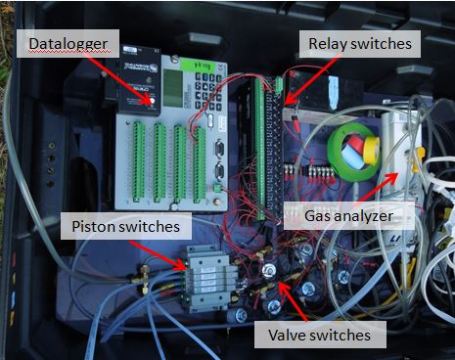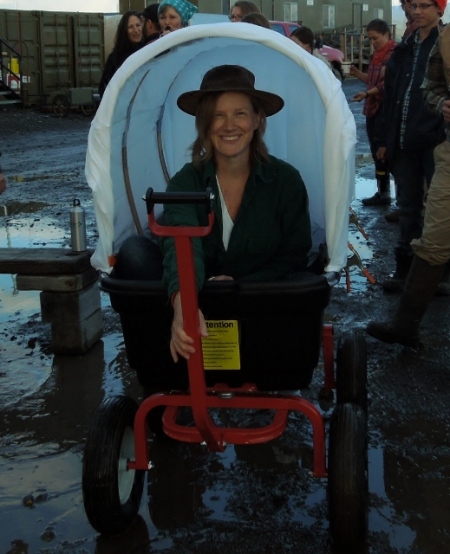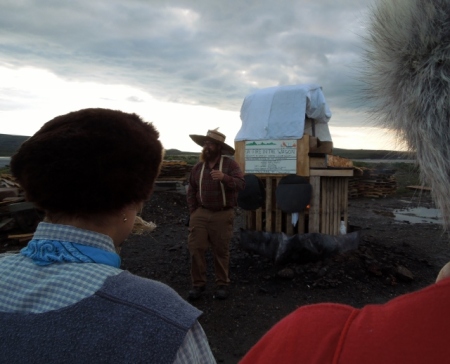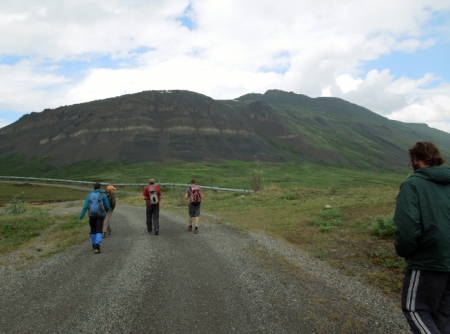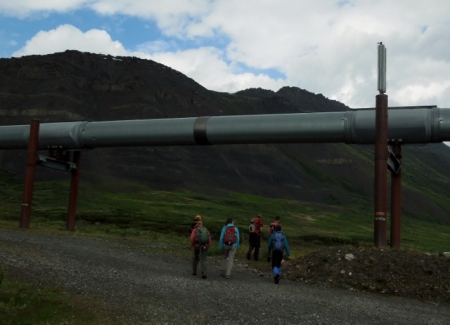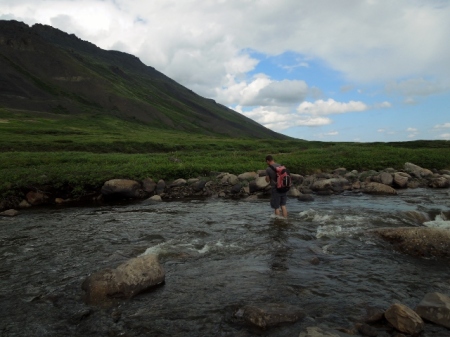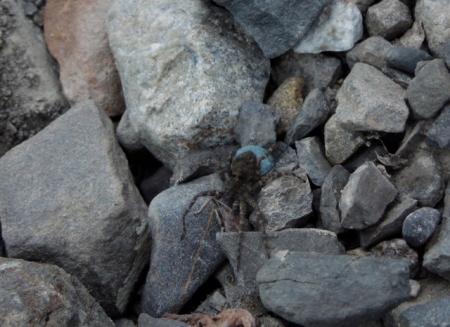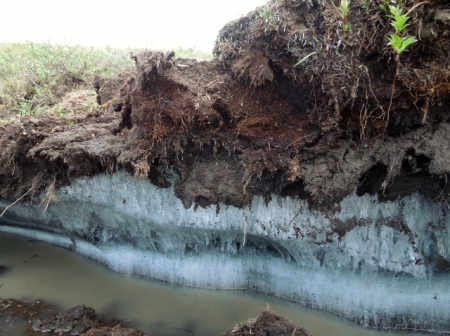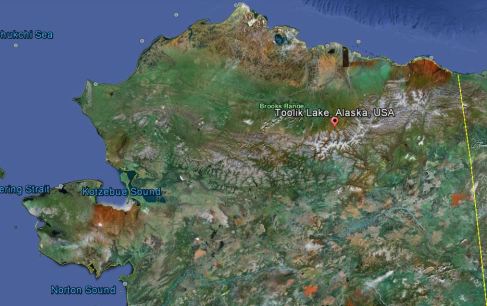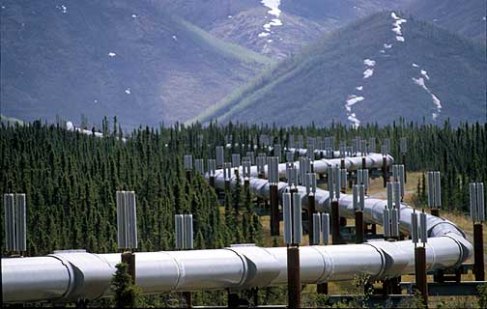Today, my friends, was an awesome day.
Today I got to fly in a helicopter for my first time. We fly from the pad at Toolik out to our research sites in a tiny little chopper that makes you feel like a dragonfly in flight (or what I imagine a dragonfly might feel like).
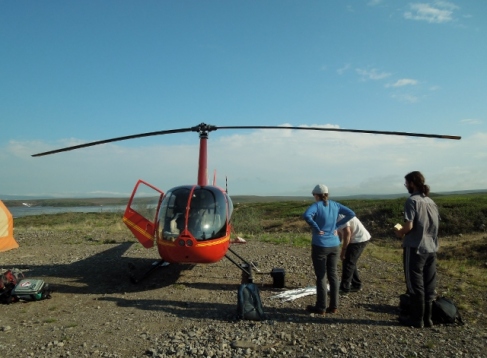
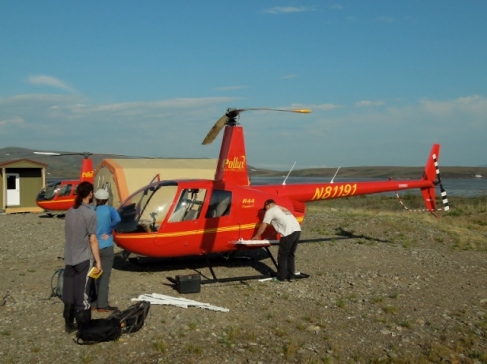

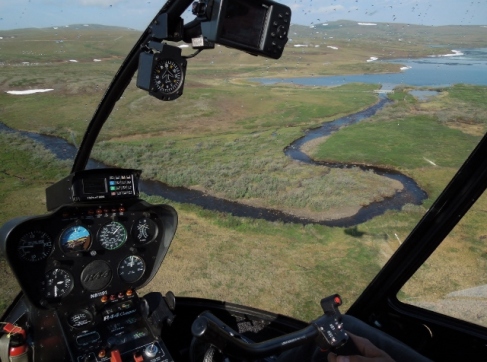
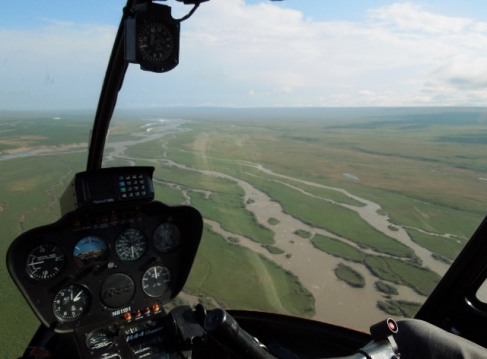
Apparently helicopter pilots fly from the right side of the chopper, so the opposite of airplanes and cars. Of course, me being the genius that I am, I climbed into the pilots seat first. The pilot climbed into the passengers seat, and proceeded to watch me to put on my seat belt. Then he said, “Are you ready? Go ahead and start it up.” After a moment of hesitation, I realized what I had done, turned a shade of red probably close to my hair color, then laughed it off and climbed out of the seat. What a good start to my day. At least I knew that the pilot would be fun.
***Warning: the next few sections of this post are pretty sciency, sorry if it bores some of you***
Once aboard the chopper, the team (me, Frank, and Kale) flew out to our research sites. We have three sites: Severely burned, moderately burned, and unburned. At each site, we had several things to do. First, we had to download data off of our eddy covariance tower (below).
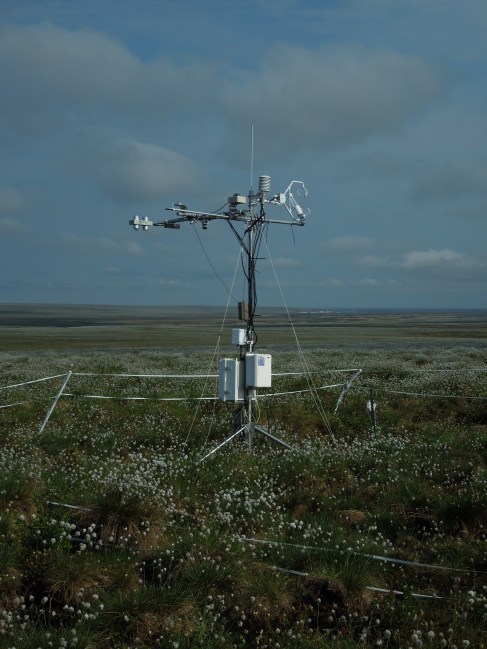
The tower measures the exchange of carbon dioxide between the ground (vegetation) and the atmosphere. It also measures radiation, PAR (photosynthetically active radiation), temperature, and humidity. There is also a time-lapse camera on the tower. We will be using data from the tower to observe how burn severity impacts carbon cycling.
The second thing that we had to do was use an ASD spectrometer to determine what wavelengths of light are being reflected off of the vegetation. This was Frank’s job because I do not know how to use the equipment yet. I will be learning though. Personally, I think the decoration on the pack that houses the main part of the sensor is quite fitting.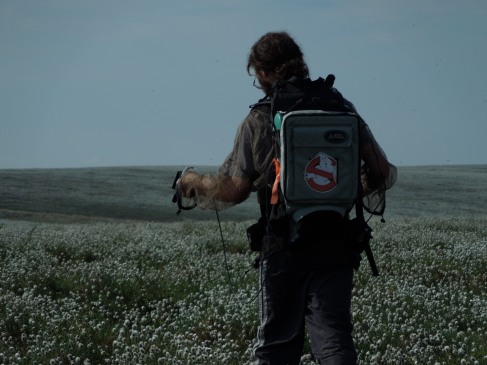
I am still learning a bit about the data from this type of equipment. To put it simply, we can see from the data when the plants start to green up, and potentially other phenological events.
We also had to measure thaw depth at 80 points at each site. At each point, we determine how much of the active layer has thawed using a thaw depth probe (below). We push it into the ground until we hit frozen soil (which is too hard to push through) and record the measurement.

Other than collecting the data, I got to walk around the sites and see the differences in plants at each one. The difference was pretty astounding.

At the severely burned site, there is hardly any moss between the tussocks (the giant balls of Eriophorum vaginatum, or cotton grass, in the photo). This is very strange, as moss is a common ground cover in the tundra (as you can see in the photo of the unburned site). Moss helps to insulate the ground, keeping it cool and slowing the thaw of the active layer. Without it, the soil may thaw more quickly.
*****End of sciency things*****
So, today was a day filled with science and adventure, and it was really fun. It felt great to be back out in the field working again. To be honest, I was very nervous about how I would feel not working out at the ITEX sites in Barrow and Atqasuk, but once I set foot on the tundra, everything just clicked and I couldn’t help but smile. It feels so good to be back in the Arctic.
I promised I would elaborate a little bit on my living conditions here in Toolik, so here we go:
This is my “weatherport”. I like to call it a glorified tent, but my Mom says it’s like a high tunnel (that you see on farms) with a floor, which is pretty accurate.
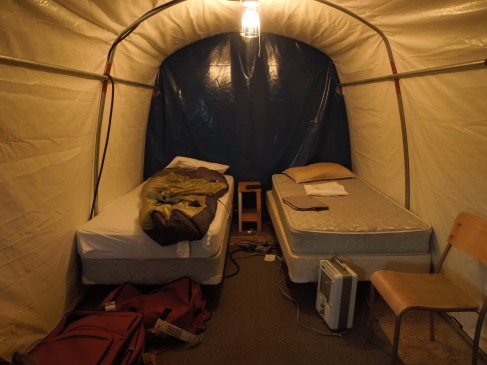
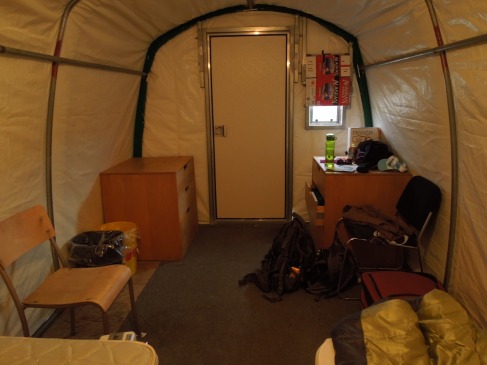
Notice the box of wine in the corner and the box I am using to hide the sun at night. The two staples of my summer. Keeping it classy here in Toolik.
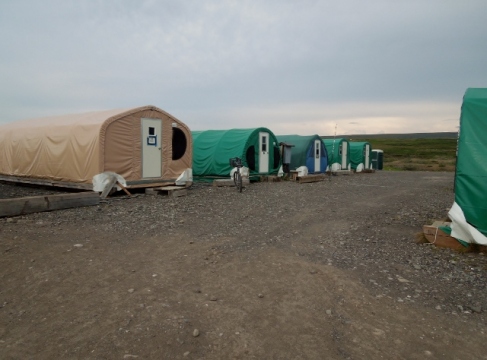
Most of the researchers are housed in these. I have mine to myself right now, but I bet when it gets busy at the end of July I will have a roommate for a bit.
Also, in order to conserve water, we are supposed to minimize the amount of toilet flushing. Outhouses like these (below) are placed around the camp in a few places.

Also, as a water saver, we are limited to 2 showers per week, each under two minutes long. There is a “shower module” with a girls section and a boys section for us to use. We also have laundry facilities that we can use once every two weeks. It costs 1$ per gallon of waste water being shipped out of camp, so we have to do our part to help the camp save money that can be used on other fun things, like the community center:
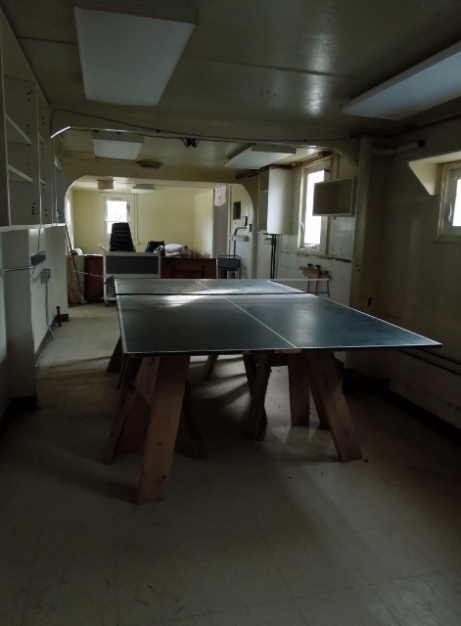
This is our ping pong table. Note the sawhorses being used as legs.

There is also a couch, drum set, and Foosball table. There is also another building that is all set up for watching movies.
Finally, here’s our lab space:

It’s pretty messy right now as we are working on setting up the automated carbon-flux chambers that you can kind of see in the photo. But, pretty soon we will move those out to the field for testing and that will free up some space.
Well, I feel like this post is sufficiently long. It’s time for me to get off my computer and go wander around camp for a bit. I’ll write again soon, otherwise Timothy Botting will be disappointed, and I just can’t have that.































